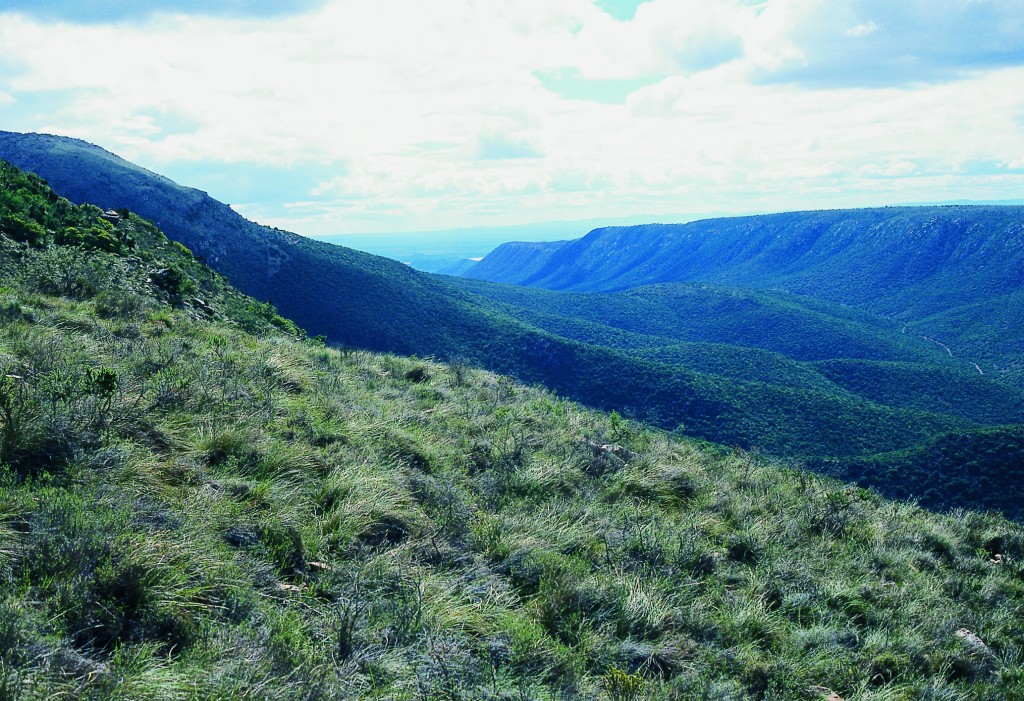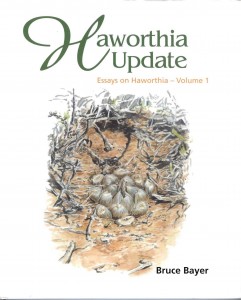Dedication
To my wife Daphne.
Contents
1.Introduction.
2.Haworthia mucronata and its new variety.
3.Haworthia gracilis, H. cymbiformis and H. cooperi in the greater Baviaanskloof area.
4.The case of Haworthia incurvula – an up-date.
5.Haworthia cooperi and H. bolusii var. blackbeardiana.
6.The Haworthias of Kaboega.
7.Summation.
Haworthia Update Essays on Haworthia – Volume 1
Umdaus Press, Hatfield, South Africa, 1999
Introduction
When I undertook to re-write my New Haworthia Handbook, and present it as an authoritative revision, I did so with some apprehension. However, I did so because in the intervening years my classification had proved personally satisfying. Also I saw little no evidence of the “adequatio” for the task anywhere else, either in circumstance, or willingness, or field experience, to do so. I am an aspirant mystic with none of the transport experience which should have given me the vision I sought. The hermetic and intuitive approach is all I have really been able to bring to my work other than a passion for truthfulness and understanding.
Now, three years after the initial drafting, Haworthia Revisited is published. The initial shock and ‘post-natal’ depression is over and I can look at it more dispassionately. My self-doubts had driven me back into the field and through many bouts of self-examination. There are no doubt many minor mistakes in the book, one of which is the appearance in my preface, of the word “difference” instead of the word “deference”. The latter was intended to convey the sentiment “courteous regard for others”.
After drafting the book, I tried to divorce myself from the manuscript and even from the plants themselves. However, nagging doubts and uncertainties remained with me, and these papers are the product of some intensive field “work”. I use the word in inverted commas for two reasons. Firstly the word “work” in this regard is very loosely used. Wandering around in the field, stumbling on plants here and there and anxiously uprooting them by hands sticky with excitement at “new’ things, does not constitute “work”. Secondly, it is in fact the most rewarding and stimulating way of coming into contact with a most extraordinary and marvelous natural environment. The actual work entails the making of the tangible physical record that places a specimen on the scientific map. I also wrote in my revision (p.12) “A revision.. stands and falls.. on .. the dry and uninteresting herbarium record”. The work therefore also entails deliberating about and examining the herbarium record with a good knowledge of its content. The implications that any new collection may have for that record and the way in which it is arranged, have to be considered and evaluated. That constitutes the “work”, and helps define an important aspect of the “adequatio” required for it to be proven as such.
I have not been able to reduce all the new collections I have made since 1996 to such a record. The plants are in cultivation and are being propagated by seed and offset, and are being recorded in this written record and by photographs. There is still a great deal to be done. Unlike T.L. Salter, who closed his revision of Oxalis with words which suggested that he had had enough, or like G.G. Smith who retired invalidated by the criticism he felt directed towards him, I hope I can continue to “work” on Haworthia.
This book consists of five essays discussing specific problems in the classification and identification of Haworthia. The two subjects are inseparable and unfortunately it is simply a case in which the species cannot be identified unless they are known. My life’s experience suggests to me that this is a sad truth for many things. Thus I rely very heavily on photographs to provide a comprehensive picture description of all the items discussed. The relevant photograph is numbered and this number preceded by a hyphen, usually follows the first reference to a collection number. Each essay has its own lesson and its own conclusion. A final sixth essay attempts to summarise and suggest a solution to a difficult problem.
Acknowledgement
I would particularly like to thank the following who have been so supportive and helpful during the exploration and writing of these papers:
W. Schwegmann, J. D. Venter, D. M. Cumming, E. J. van Jaarsveld, P. V. Bruyns, T. Dold, D. Weekes, J. G. Marx, E. Heunis, E. Aslander, D. Clark, L. Loucka and C. Marais.
Farm owners have also been particularly helpful and I am very grateful indeed for access to such properties. In this case I am indebted to Mr and Mrs. N. Sparg, Mr. and Mrs. Killian, Mr. P. Moolman and Mr. J. Truter.
Lastly I am very indebted to Ian and Sandy Ritchie of Kaboega for their hospitality and kindness, and for sharing their own Eden and love of nature so generously with Daphne and myself. I must also record my gratitude and respect to the owners of Kaboega, and note the contribution they are making towards conservation – Mr. and Mrs. Andre Bezuidenhout.
I am grateful to Umdaus Press, and particularly to Mr. J. A. Retief, for their encouragement, support and effort to bring this work to fruition.
Acknowledgement is hereby given to Cape Nature Conservation and to the Eastern and Northern Cape Provincial Nature Conservation Authorities for the permits which were issued for the necessary but limited collecting required for this work. In the Western, Eastern and Northern Cape Provinces of the Republic of South Africa, all species of the genus Haworthia are classified as “protected flora” in terms of the Nature and Environmental Conservation Ordinance, 1974 (Ordinance 19 of 1974), as it is applicable to each of the afore-mentioned Provinces. Material for this book was gathered and collected on terms of the spirit and letter of this Ordinance. Nothing in the book should be construed as an encouragement to acquire these plants from their natural habitat or to suggest they are better located anywhere but in that situation. ♦
M B Bayer, 16 Hope Str., 8001 Cape Town.


